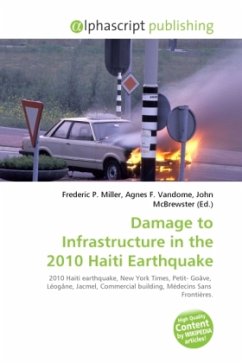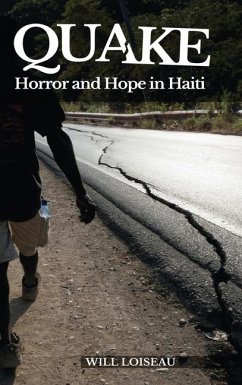
Damage to Infrastructure in the 2010 Haiti Earthquake
Versandkostenfrei!
Versandfertig in 6-10 Tagen
32,99 €
inkl. MwSt.

PAYBACK Punkte
16 °P sammeln!
Damage to infrastructure in the 2010 Haiti earthquake was extensive and affected areas included Port-au-Prince, Petit- Goâve, Léogâne, Jacmel and other settlements in southwestern Haiti. The New York Times reported on 28 January, 2010 that 20,000 commercial buildings and 225,000 residences in the country had collapsed or were severely damaged and need to be demolished.The deputy mayor of Léogâne, which was at the epicenter of the earthquake, reported that 90% percent of the buildings in that city had been destroyed and Léogâne had "to be totally rebuilt." Many notable landmark buildings...
Damage to infrastructure in the 2010 Haiti earthquake was extensive and affected areas included Port-au-Prince, Petit- Goâve, Léogâne, Jacmel and other settlements in southwestern Haiti. The New York Times reported on 28 January, 2010 that 20,000 commercial buildings and 225,000 residences in the country had collapsed or were severely damaged and need to be demolished.The deputy mayor of Léogâne, which was at the epicenter of the earthquake, reported that 90% percent of the buildings in that city had been destroyed and Léogâne had "to be totally rebuilt." Many notable landmark buildings were significantly damaged or destroyed, including the Presidential Palace, the National Assembly building, the Port-au-Prince Cathedral, and the main jail. The Ministry of Education estimated that half the nation's 15,000 primary schools and 1,500 secondary schools. In addition, the three main universities in Port-au-Prince were also severely damaged. Other affected infrastructure included telephone networks, radio station, factories, and museums.












